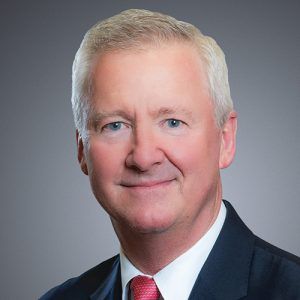The word “rally” can be used for a number of purposes and in different contexts. For instance, it could mean a long-distance auto race over varying surfaces involving stages and checkpoints. It could mean a gathering of supporters to generate enthusiasm and momentum for an individual or cause; we’ve seen plenty of these during this election cycle.
It can also refer to a comeback from some type of challenge. It may be an improvement in one’s health. It could be a spurt of energy to enable the completion of a task. Finally, it might be an analogy for sports or other competitions in which a participant or team overcomes a deficit to snatch victory out of the grasp of defeat.
This final example is the general theme of this column. I hasten to say that the community banking industry, by most measures, is doing quite well. I’ve consistently heard from bankers across the country this year that “earnings are good.” So if there’s any catching up to do, it’s not in banking fundamentals. It has to do with – you guessed right – rising interest rates and the attendant drop in market values for your bonds. Here are a few ideas that may be worth considering as we approach year-end.
Funding options
Suddenly, shockingly in some cases, community banks are having to consider using wholesale funds to manage their liquidity. This is an exercise that faded in relevance in 2019 as loan demand was beginning to wane, and has been in oblivion since. Not now: FHLB’s issued more debt in the third quarter than they did in the first two quarters combined, most of which was used to finance new advances to community banks.
And with a little effort, a bank can lock down attractive (which I admit is relative) terms on longer-duration borrowings. Even with 5%-plus yields available on shorter assets, low-4% costs can be secured for FHLB floating rate advances swapped to fixed for five or so years. If you’re not inclined to execute a rate swap, traditional three- to seven-year advances are generally less expensive than brokered CDs. This is, in part, compliments of the inverted yield curve.
“Income deferral”
This subheading is shorthand for “sell assets at a loss in this fiscal year, reinvest into higher-yielding bonds, and make back the loss before your original bonds mature.” All accountants worth their salt (I think I’m one of them) understand that pushing income into the future is a wise move from tax planning and cash flow standpoint. And, since all community banks own liquid assets at below-market rates (i.e., have unrealized losses) in a year in which they’re probably ahead of budget, the table is set for a classic holiday feast: tax swap.
What makes this strategy viable in many cases is the ability to book a net-of-tax loss since selling bonds is considered an ordinary event for a community bank. When the proceeds are reinvested into tax-free instruments, the net loss is often recouped in short order. Your brokers are capable of modeling a number of possible transactions to determine the best course of action. If you do go down this path, here are a couple of possible sales items that may work for you:
- Short bullet bonds or out-of-the-money callables
- Short (< five year) municipals (which are the domain of retail investors)
- Odd lot MBS with several years of seasoning
And for all you S corps, this strategy works even better as your higher marginal tax rates allow you to avoid more income tax liability.
Look Around You
If you’re inclined to sell out of some losing positions but need to limit the impact on this year’s earnings, remember there may be other pieces of your balance sheet that can be sold at a profit. Not the least of these are floating rate assets such as SBA 7(a) loans.
The guaranteed portion of a 7(a) loan will likely adjust each quarter based on prime, which is 100% correlated with fed funds. They command large premia in the secondary market; it’s not uncommon to see a bid of over 110 cents on the dollar. Plus, the lender/seller is required to retain the unguaranteed portion of the loan and to service it as well. SBA lender service providers can guide a community bank through the secondary market process.
Far from making up lost ground, using some of these ideas can more correctly press your advantages into 2023 and beyond. In a year of positive earnings pictures and solid credit quality, the fourth quarter could be the ideal time to set the stage for robust future periods. This holiday season, community bankers may be donning their rally caps.

Jim Reber (jreber@icbasecurities.com) is president and CEO of ICBA Securities, ICBA’s institutional, fixed-income broker-dealer for community banks.









